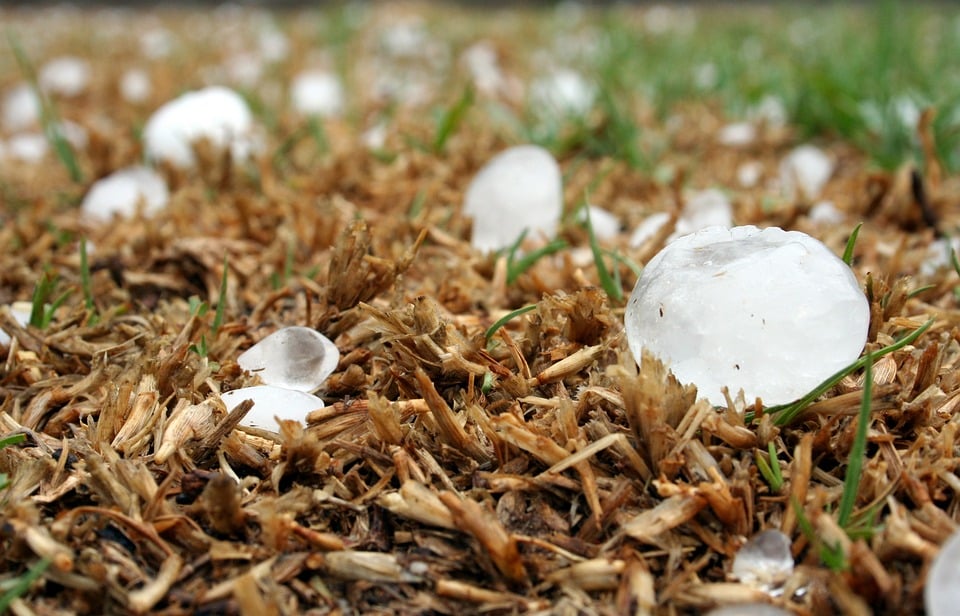Hail forms in strong thunderstorm clouds, especially when there are intense updrafts. When the updrafts carry raindrops into the upper cloud levels while the temperature is below freezing, small particles of ice form around an ice crystal, frozen raindrop, or a speck of dust. This ice particle then drops below the upper cloud and picks up more moisture from water vapor or other raindrops. When caught in another updraft, it will freeze again. When the updraft is strong, the hailstone will circulate up and down, growing larger and larger until gravity sends it plummeting downward where it can inflict injury on people and property below.
If your roof is pelted by hail, you might not fully see the damage on your roof while standing on the ground, but you can still make your initial damage assessment by walking around the house to check for evidence from the ground level.
In most cases, when there is severe hail damage on your roof, you will see the impact on your gutters. Be on the lookout for dents and other small marks on the gutter. Also inspect the siding and windowsills or casings on your house for dents, dings, and other signs of impact. Additionally, check the exposed metal surfaces in the house, such as the fascia on the eaves.
If you are not comfortable walking around on the roof of your home, contact a professional roofer or home assessor. If you are at ease on your roof, these are some things to pay attention to:
- Check your vents, chimneys, skylights, shingles, and other features on the roof for damages. One thing you should be looking out for are dings, dents, and chipped surfaces on the roof vents and other features.
- It is important to examine the shingles closely. Without damage on the shingles, you may not have a solid basis for insurance claims.
- While some damages are obvious, others are difficult to uncover. Look for surface granules that are scattered across your roof. It can be difficult to detect damage on shingles, but loose particles are a telltale sign. It takes a strong force to have that kind of impact on the shingle’s surface granules. Do not assume that just because there are no holes or dents in the shingles that they are unharmed; the missing surface granules are a strong enough indicator that your roof has been compromised. Over time, you could see the effects in the form of a leaky roof.
Different roofing materials handle hail in different ways. What might start as a small amount of damage to your metal, wood, or shingled roof, could end up in massive roofing problems down the line. Unless you are a trained roofer, you probably won’t be able to find all of the damage to your roof, so after a severe hailstorm, be sure to call a professional roofer. They will know how to stop additional damage before it starts, and they can advise you on whether or not you can file an insurance claim to help with the cost of repairing any damage done.

